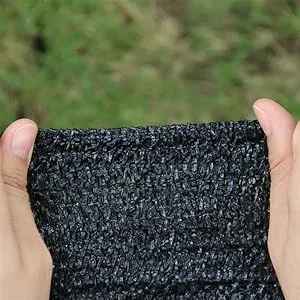-
 Afrikaans
Afrikaans -
 Albanian
Albanian -
 Amharic
Amharic -
 Arabic
Arabic -
 Armenian
Armenian -
 Azerbaijani
Azerbaijani -
 Basque
Basque -
 Belarusian
Belarusian -
 Bengali
Bengali -
 Bosnian
Bosnian -
 Bulgarian
Bulgarian -
 Catalan
Catalan -
 Cebuano
Cebuano -
 China
China -
 Corsican
Corsican -
 Croatian
Croatian -
 Czech
Czech -
 Danish
Danish -
 Dutch
Dutch -
 English
English -
 Esperanto
Esperanto -
 Estonian
Estonian -
 Finnish
Finnish -
 French
French -
 Frisian
Frisian -
 Galician
Galician -
 Georgian
Georgian -
 German
German -
 Greek
Greek -
 Gujarati
Gujarati -
 Haitian Creole
Haitian Creole -
 hausa
hausa -
 hawaiian
hawaiian -
 Hebrew
Hebrew -
 Hindi
Hindi -
 Miao
Miao -
 Hungarian
Hungarian -
 Icelandic
Icelandic -
 igbo
igbo -
 Indonesian
Indonesian -
 irish
irish -
 Italian
Italian -
 Japanese
Japanese -
 Javanese
Javanese -
 Kannada
Kannada -
 kazakh
kazakh -
 Khmer
Khmer -
 Rwandese
Rwandese -
 Korean
Korean -
 Kurdish
Kurdish -
 Kyrgyz
Kyrgyz -
 Lao
Lao -
 Latin
Latin -
 Latvian
Latvian -
 Lithuanian
Lithuanian -
 Luxembourgish
Luxembourgish -
 Macedonian
Macedonian -
 Malgashi
Malgashi -
 Malay
Malay -
 Malayalam
Malayalam -
 Maltese
Maltese -
 Maori
Maori -
 Marathi
Marathi -
 Mongolian
Mongolian -
 Myanmar
Myanmar -
 Nepali
Nepali -
 Norwegian
Norwegian -
 Norwegian
Norwegian -
 Occitan
Occitan -
 Pashto
Pashto -
 Persian
Persian -
 Polish
Polish -
 Portuguese
Portuguese -
 Punjabi
Punjabi -
 Romanian
Romanian -
 Russian
Russian -
 Samoan
Samoan -
 Scottish Gaelic
Scottish Gaelic -
 Serbian
Serbian -
 Sesotho
Sesotho -
 Shona
Shona -
 Sindhi
Sindhi -
 Sinhala
Sinhala -
 Slovak
Slovak -
 Slovenian
Slovenian -
 Somali
Somali -
 Spanish
Spanish -
 Sundanese
Sundanese -
 Swahili
Swahili -
 Swedish
Swedish -
 Tagalog
Tagalog -
 Tajik
Tajik -
 Tamil
Tamil -
 Tatar
Tatar -
 Telugu
Telugu -
 Thai
Thai -
 Turkish
Turkish -
 Turkmen
Turkmen -
 Ukrainian
Ukrainian -
 Urdu
Urdu -
 Uighur
Uighur -
 Uzbek
Uzbek -
 Vietnamese
Vietnamese -
 Welsh
Welsh -
 Bantu
Bantu -
 Yiddish
Yiddish -
 Yoruba
Yoruba -
 Zulu
Zulu
Innovative Approaches to Sustainable Steel Production and Netting Techniques
The Growing Importance of Netted Steel in Modern Construction
In recent years, the construction industry has witnessed a significant transformation, driven by the need for enhanced structural integrity and sustainability. Among various materials, netted steel has emerged as a pivotal innovation, providing numerous advantages that cater to the demands of modern architecture and engineering.
Netted steel, primarily composed of high-strength steel wires arranged in a net-like formation, offers remarkable benefits over traditional steel reinforcement methods. One of the most prominent features of netted steel is its superior tensile strength, which allows for better load distribution within structures. This attribute is particularly essential for buildings and infrastructure subjected to dynamic forces, such as earthquakes and heavy winds. By employing netted steel, engineers can design safer, more resilient structures that can withstand extreme environmental conditions.
Moreover, the adaptability of netted steel in various construction applications is noteworthy. It can be used in a wide range of projects, from residential buildings to large-scale commercial complexes and infrastructure works like bridges and tunnels. The versatility of netted steel enables architects and engineers to explore innovative designs while ensuring structural stability. This adaptability extends to its integration with other materials, such as concrete, enhancing the overall performance and longevity of the structures.
Another essential aspect of netted steel is its lightweight nature compared to traditional reinforcement methods
. This characteristic not only simplifies the handling and installation processes but also reduces the overall weight of the constructed units. A lighter structure can lead to decreased foundation requirements, resulting in cost savings and less environmental impact during the excavation and construction phases.netted steel

Sustainability is a crucial consideration in modern construction, and netted steel aligns well with this principle. The production of high-strength steel involves advanced technologies that minimize energy consumption and emissions. Additionally, netted steel's longevity contributes to sustainability, as structures reinforced with this material require less frequent maintenance and repair. This durability reduces resource consumption over the lifecycle of the building, making netted steel a more eco-friendly choice in the long run.
Furthermore, netted steel benefits in terms of ease of use. Its customizable nature allows it to be tailored to specific project requirements, whether in size, shape, or strength. This eliminates the need for extensive modifications on-site, thereby streamlining the construction process and improving efficiency. Rapid installation and reduced labor times contribute to overall project timelines, which is particularly advantageous in an industry often constrained by deadlines.
Despite the numerous advantages of netted steel, its adoption requires a cultural shift within the construction industry. Many professionals are still accustomed to traditional methods, and education regarding the benefits and applications of netted steel is essential. Workshops, seminars, and hands-on training can help dispel myths surrounding netted steel and encourage its integration into mainstream building practices.
In conclusion, netted steel represents a major advancement in construction technology that promises to shape the future of building. Its unique combination of strength, versatility, lightweight properties, sustainability, and ease of use positions it as a vital material for modern architecture and infrastructure projects. As the industry continues to evolve, embracing innovations like netted steel will be crucial to achieving safer, more efficient, and environmentally responsible construction practices. The shift towards netted steel is not merely an option; it is an imperative for forward-thinking engineers and architects aiming to build resilient structures that can withstand the test of time.
-
Shipping Plastic Bags for Every NeedNewsJul.24,2025
-
Safety Netting: Your Shield in ConstructionNewsJul.24,2025
-
Plastic Mesh Netting for Everyday UseNewsJul.24,2025
-
Nylon Netting for Every UseNewsJul.24,2025
-
Mesh Breeder Box for Fish TanksNewsJul.24,2025
-
Expanded Steel Mesh Offers Durable VersatilityNewsJul.24,2025











